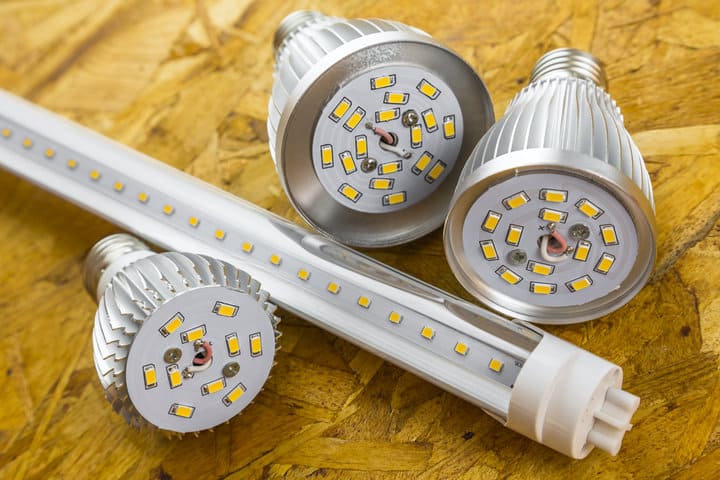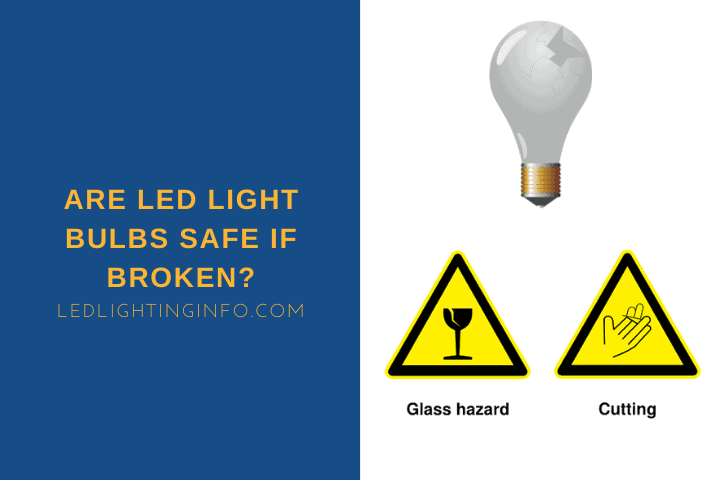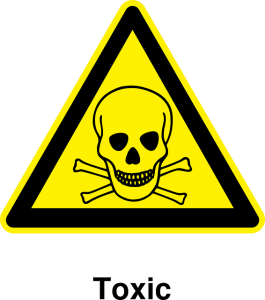Broken glass, harmful gases, toxic substances…old light bulbs offered a wide range of hazards if they were to break. While they weren’t inherently dangerous, they were risky if you mishandled the.
Is that the same with more modern options? Are broken LED bulbs just as much of a risk, or is this another reason to switch those traditional incandescent bulbs with more contemporary replacements?
Broken LED bulbs aren’t dangerous. Although they contain hazardous materials, the concentration of these substances is minimal. The only slight risk is if the glass breaks. The exception is bulbs with a broken base – replace these to prevent damage to the wiring.
Let’s take a look at:
- The potential hazards of a broken LED bulb
- Whether LED bulbs contain mercury
- If there are any other toxic chemical risks from broken bulbs
- What to do with a broken bulb
What Are The Dangers Of A Broken LED Light Bulb?

The only real danger posed by broken LED bulbs is broken glass shards. There are no toxic substances inside an LED bulb in a big enough quantity to cause harm. Even then, many LED bulbs don’t use glass, but instead use shatterproof plastic or an epoxy resin cover.
Unlike other conventional bulbs, an LED light is not filled with gas. The LED doesn’t need the glass bulb to function; it merely serves aesthetic purposes or helps to diffuse the light.
As with any glass object, the bulb surrounding an LED chip is fragile and cannot handle much pressure. Upon impact, it could shatter into thousands of tiny, razor-sharp pieces.
Since they’re translucent, these fragments can be difficult to detect, but if they’re stood on, they will hurt!
If you have a lucky escape and your LED bulb cracks but doesn’t shatter, it’s good news. Providing that the diode itself has not been disturbed, it should continue to emit light as usual.
Plastic and epoxy bulbs won’t shatter but if they do crack, they may leave a sharp edge. You should just take care when removing them from the fixture.
LED Light Bulb Base Cracked, But Still Works
It’s best to replace broken LED light bulbs if they have a cracked base. They will still work, but if they have a crack in the base then there’s a risk of moisture getting into the wiring which could cause a problem.
It’s rare for LED bulbs to have a cracked base since they’re usually pretty robust, but this is one area to be careful with. The base contains the wiring and so poses more of a risk – if you’ve somehow cracked it (potentially by over-tightening it in the fixture), replace it.
Are LED Lights Radioactive?
Technically, LED bulbs are radioactive in that they emit UV rays, but the amount of radiation emitted by bulbs designed for your home is completely harmless.
There are special LED bulbs designed to emit higher levels of UV lighting – used for tanning, or sterilization. These are more harmful if used incorrectly.
But the LED bulbs you install at home? Nothing to worry about.
Do LED Bulbs Contain Mercury?

LEDs do not contain the slightest trace of mercury. Unlike their predecessors, LEDs generate light using a semiconductor. No mercury is required for this process, which means, despite their imperfections, LEDs are seen as an environmentally friendly lighting solution.
But what’s so bad about mercury?
When heated, mercury turns to a colorless, odorless vapor that is used in CFLs to excite the tungsten coils electrons. Exposure to mercury is extremely harmful, especially for children and babies.
A low level of exposure can result in fatigue, brain fuzz, and lack of concentration. Long-term exposure, whereas, may cause neuromuscular issues such as muscle atrophy, tremors, and weakness.
A 2008 study by Environmental Health Perspective estimates that CFLs typically contain around 3 to 5 milligrams of mercury.
Once broken, this mercury vapor can escape into the air in your home or property and manifest there for weeks.
So this explains why CFL and fluorescent bulbs require careful handling and disposal if they burn out or get broken.
Do LED Lights Have Toxic Chemicals?
Research by the University of California found that the internal components of an LED contain materials that are considered toxic such as arsenic, lead, iron, copper, and nickel. However, the amount contained is tiny – it won’t harm you.
Exposure to these materials is extremely harmful and can cause long-term health implications.
Increased exposure to arsenic, for instance, increases the risk of cancer, diabetes, and skin lesions.
Interestingly, the concentration of these substances varies depending on the type of LED.
The 2010 study found that red LEDs are typically the worst offenders, as they contain eight times more lead than other colors of LED.
These materials are not just hazardous to humans, they also harm the planet. Copper doesn’t decompose, which means that when it accumulates in the environment it can result in copper poisoning in microorganisms and marine wildlife.
However, under Title 22, Californian law sets out the maximum weight of harmful substances permitted per kilogram. LEDs fall way below this limit.
While I don’t recommend cracking open an LED and breathing in its fumes, exposure to these toxic materials in such minute amounts is unlikely to have any nasty consequences.
What Should You Do With Broken LED
If your LED bulb breaks, you should:
- Send children and pets to a different room to stop them from hurting themselves.
- Next, put on gloves and a mask. This will protect your hands from broken glass and prevent you from inhaling toxic fumes – even though they are minor.
- Open the windows and turn off any air conditioning to allow the fumes to dissipate.
- Sweep up the shards of glass with a stiff piece of cardboard. Using a broom is fine, but make sure you carefully clean the broom head when done.
- Use sticky tape to pick up any smaller fragments that you may have missed. You can use a vacuum cleaner at this stage, but bigger pieces of glass can damage your vacuum.
- Place all of the broken pieces into a sealable container.
These are all the extra-careful steps. Again, broken light bulbs aren’t toxic when they’re LEDs, so they don’t need to be disposed of in a special way. And the fumes are very unlikely to be harmful. Still, better to be extra cautious.
If you can then recycle your broken bulb, do so. Otherwise, it can be disposed of in the regular trash.
Final Words
An LED bulb that breaks is going to cause you a lot less trouble than older CFL or incandescent light bulbs. Still, you should be careful when handling them.
Hopefully in the future, the lighting industry can find ways to make a light emitting diode without the harmful materials that they do contain at the moment.
For now though, just follow the safety precautions I’ve given you, and you’ll be fine.
In case you’re wondering whether LED bulbs can explode…why not read my guide to that next?
Looking for an LED bulb but not sure what type you need?
Check out my free bulb picker and select the right bulb within few clicks.




Comments are closed.